Prelude
Before we start this installment, here is how a representative of an infantile culture behaves:
(CNN) Donald Trump had an “absolute meltdown” when a lawyer requested a break from a 2011 deposition to pump breast milk.
“He got up, his face got red, he shook his finger at me and he screamed, ‘You’re disgusting, you’re disgusting,’ and he ran out of there,” attorney Elizabeth Beck told CNN’s Alisyn Camerota on Wednesday morning.
The incident was described in a letter from Jared Beck, Elizabeth’s co-counsel and husband, obtained by CNN and first reported Tuesday by the New York Times.
Trump’s attorney Allen Garten, who was present for the deposition, does not dispute that Trump called Beck “disgusting.”
Thus spaketh the man who claims he’d be “the greatest president for women ever.” (See “Lawyer: Donald Trump called me ‘disgusting’ for request to pump breast milk” by Jeremy Diamond, CNN, July 29, 2015.)
For contrast, here is how representatives of a mature culture behave:
Unnur Brá Konráðsdóttir is a member of the Icelandic parliament for the center-right Iceland Independence Party, and a new mother.
On Oct. 12, reports The Icelandic National Broadcasting Service, another MP unexpectedly responded to an bill that she had put forward, so Konráðsdóttir had to take the podium. But she had already started breastfeeding her baby daughter.
Forced to choose between upsetting the baby by putting it down, or taking her baby to the podium, Konráðsdóttir picked the second. She delivered her remarks quickly, while her daughter continued to drink undisturbed.
(See “An Icelandic MP breastfed her baby while addressing parliament” by Annalisa Merelli, Quartz, October 15, 2016.)
For Adults Only
The third presidential debate of this cycle, between Hillary Clinton and Donald Trump, took place on October 19 at the University of Nevada-Las Vegas (UNLV), a school at which I have actually taught twice, as a critic in residence (1991 and 2001), and of which I have fond memories. I watched it live, in its entirety. (I suffer these slings and arrows for you, my readers.)
Trump’s pre-debate this time out had him bringing as his guest Patricia Smith, mother of Benghazi victim Sean Smith, for a second dose of the bereavement porn in which she starred at the Republican National Convention (referred to by some as “the weaponization of grief”).
He also brought along Pres. Barack Obama’s estranged older half-brother, Malik Obama, the son of Barack Obama, Sr.’s first wife and a Kenya-born American citizen residing in Washington, DC. Malik, a Muslim polygamist, has declared that he will vote for Trump because (a) “he speaks from the heart,” (b) “Make America Great Again is a great slogan,” and (c) “he blame[s] the death of Libyan dictator Moammar Qaddafi on Hillary Clinton … [and] claims that Qaddafi was a friend of his.”
Trump also invited one-time Arkansas news reporter Leslie Millwee, who claims that former President Bill Clinton assaulted her several times in 1980.
Presumably The Donald expected the extreme WTF-ness of all that to throw Clinton off her game, as well as to remind everyone subliminally wink-wink-nudge-nudge of the birther lunacy, the claims that Obama’s a secret Muslim, and the Libya debacle. Good luck with that, said I. H-Rod (as some in the younger set now refer to Clinton) is made of sterner stuff.
•
Judged as performance art from a spectatorial perspective, this third debate — by contrast with the first two — proved relatively tame. The audience behaved itself. The candidates stood behind their respective podiums throughout, eliminating the high drama of The Donald stalking and lurking behind and looming over Clinton. Consequently, the streaming video consisted of side-by-side views of Trump on the left and Clinton on the right, a standardized and visually unexciting format, animated only by Trump’s frequent cartoonish poses. (You can watch it here.)
The debate’s format — questions posed to the candidates by moderator Chris Wallace of Fox News, followed by exchanges between them — kept the proceedings largely on track. Still, Wallace did not manage to maintain better control of the candidates than any of his predecessors this season. According to Sarah Frostenson at Vox,
Donald Trump was true to form — he interrupted Hillary Clinton 37 times. Clinton only interrupted him nine times. … And while Trump once again interrupted — and interjected — far more than Clinton, he also interrupted Wallace more than any other moderator in the previous two debates.
Trump failed yet again to control his repertoire of facial expressions — smirks, sneers, eye-rolls. Watching it the next it day with the sound off, I saw two repeated manifestations of Trump’s body language. First, when Clinton wanted to indicate her opponent she would wave her right arm in his direction, while addressing her questioner (Wallace) and the camera; for his part, Trump would often turn and glare venomously at Clinton while aiming a short accusatory finger at her and addressing her directly.
Second, while overriding Wallace whenever the moderator tried to enforce the time rules or require him to actually respond to the question, and on other occasions as well, Trump continued talking while thrusting his arm forward stiffly like a running back holding off a tackle, with his middle finger pressed into his thumb and his stubby index finger raised. (Not me, but many people are saying that this hand gesture is frequently used by terrorists, for whom it “represents the oneness of God but has now come to be associated with IS, pointing one finger towards the sky.” I don’t know. You tell me. Coincidence? You decide.)
Insofar as content goes, little of the unexpected entered this exchange. Indeed, the largest surprise came during the first third, when Trump presented himself as reasonably rational and presidential — actually answering the questions asked, staying relatively on-topic, speaking coherently, and staking out identifiable positions on various topics.
But then some inner switch got thrown. Not, so far as I could tell, by anything said by either Wallace or Clinton, just the real Trump unable to contain himself anymore. After that, it was business as usual. What some have dubbed “Pussygate” continued to haunt The Donald, coming up yet again and receiving the same lame, dismissive response from this serial groper. The Wikileaks disclosures came up but did both sides some damage — Trump more so than Clinton, due to an artful pivot by Clinton.
But the headlines the next morning concentrated on Trump’s refusal to say categorically that he would accept the results of the election.
This calculated strategy seeks to make the outcome on November 8 somehow contingent on Trump’s approval thereof, and thus to keep him relevant from now until then despite the fact that, for all intents and purposes, this election is over and he has lost. Yet neither the media, the American electorate, nor Hillary Clinton have any obligation to await his concession before acknowledging her victory and his defeat and moving forward on the night of November 8.
Trump managed to alienate yet more women by interjecting “Such a nasty woman” into one of Clinton’s comments, and cemented his rejection by the Latino population with his reference to “bad hombres.” Both phrases immediately turned into hashtags that will surely trail after him for a long time. Who would have expected anything else? As Van Jones said on CNN after the debate, “You can’t polish this turd.”
And you can’t spin what pollsters rate as an 83 percent likelihood of a Clinton victory into a contest too close to call. Unless some secret army of registered Trump voters, undetected by polls and journalists, masses silently with a plan to descend unexpectedly on the voting machines come November 8, this is a done deal, whose art came entirely from the Clinton side. Think of this as an application of The Donald’s vaunted negotiating skills and you’ll get a sense of Trump’s adroitness in the business world.
We have less than three weeks of this to endure. To quote Jon Stewart on November 5, 2012, “I want this over!”
Diagnosing The Donald
Trump, who called for Hillary Clinton to take a drug test before the third debate, sniffed and snorted frequently and audibly throughout the the first and second debates. I noticed much less sniffling from Trump this time out; maybe he took an antihistamine. This raised a legitimate question concerning his health, as well as the unanswered questions about his connections to the traffic in cocaine.
Notwithstanding Howard Dean’s perhaps facetious insinuation that cocaine use might explain Trump’s nasal behavior, no evidence suggests substance abuse on his part. However, we still know little officially about Trump’s health — and I do include in that both the absurd one-page letter on that score offered by his gastroenterologist, Dr. Harold N. Bornstein of Lenox Hill Hospital in Manhattan and the later, more detailed one-pager from Bornstein that the Donald elected to reveal to Dr. Oz on his live daytime TV show on September 15.
Visibly, Trump qualifies as borderline obese; he brags about living on a fast-food diet, and gets no exercise aside from the occasional round of golf. Behaviorally, he shows all the signs of a classic Type A personality, the belligerent, apoplectic, elderly alpha male prone to heart attacks. So his health should concern us no less than Hillary’s, yet he continues to get a pass from the press on his refusal to release his full medical records.
Questions about his mental health have arisen as a result of his consistently bizarre behavior. Michael Moore argues, persuasively, that Trump’s only purposes in running for the presidency are ego gratification and the raising of brand awareness — that, in fact he intends to lose the race. See Moore’s August 18 op-ed, “Is Trump purposely sabotaging his campaign?”
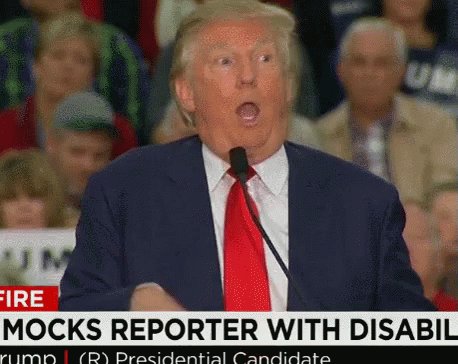
Donald Trump mocks disabled New York Times reporter Serge F. Kovaleski, South Carolina rally, 11-24-15, screenshot
That would make him crazy like a fox. But others ask, quite seriously, whether Trump might qualify as literally crazy — specifically, whether he suffers from senile dementia, also known as Alzheimer’s disease. See Steve King’s October 1, 2015 piece for Death and Taxes, “Does Donald Trump have dementia?” And , “Is Donald Trump Suffering From Delusional Senile Dementia?” And Sophia A. McClennen’s April 25, 2016 Salon article, “Maybe Donald Trump has really lost his mind: What if the GOP frontrunner isn’t crazy, but simply not well?”
I have some personal experience with senile dementia; my mother suffered from this affliction during the late years of her life. The only component of that disease I see in Trump comes as what psychiatrists call perseveration — idées fixes, unshakable convictions immune to change even in the face of facts and hard evidence to the contrary. There’s plenty of that around, much of it in people no one would consider senile. Remember the motto for this blog, from Richard Kirstel: “Ignorance is a condition; dumbness is a commitment.” Trump and his devotees are deeply committed.
(Of course, I’m no doctor, so I could be wrong. In which case the party that gave us the first presidential candidate with senile dementia — Saint Bonzo — has offered us the second.)
Assuming that Trump suffers from nothing worse than egomania, narcissism, and megalomania (not necessarily in that order), we still have a dangerous individual running for national office as the nominee of a major party. Read Keith Olbermann’s “176 Reasons Donald Trump Shouldn’t Be President,” published at GQ on September 12.
Eastwooding 2016
Though he has not patronized any empty chairs this time around, nor starred in any endorsement commercials, actor, director, and sometime jazz musician Clint Eastwood has weighed in on the upcoming election, making no bones about the fact that he favors The Donald. See Jill Serjeant‘s August 5, 2016 report for Reuters, “Clint Eastwood: Trump says ‘dumb things’ but people should ‘get over it.'”
“He’s onto something because secretly everybody’s getting tired of political correctness, kissing up,” the acclaimed actor and director said of Trump. “That’s the kiss-ass generation we’re in right now. We’re really in a pussy generation. Everybody’s walking on eggshells.”
This was before Trump proclaimed himself privileged with any women he found attractive to “grab them by the pussy.” Eastwood’s deafening silence on these words of Trump’s make it clear that, like The Donald, he comes from an earlier “pussy generation.”
And a generation whose white people had a much different awareness of racial issues. “We see people accusing people of being racist and all kinds of stuff. When I grew up, those things weren’t called racist,” Eastwood added.
Eastwood was born in 1930, in San Francisco, but grew up near Oakland, in the East Bay. Between 1930 and 1940, the black population of San Francisco grew by only 1000, to 4850 (0.8 percent), whereas in Oakland blacks formed a whopping 3 percent of the city’s residents. In 1940, 60% of the city’s black population lived in West Oakland. So there’s a strong likelihood that, until he reached the age of 10, Eastwood hardly ever saw a black person, much less interacted with one, anywhere he went — school, church, stores, movie houses, restaurants, parks, on the street.
World War II saw an influx of southern blacks attracted by job opportunities in the war industries, and by 1950 — when Eastwood turned 20 — Oakland’s black population had grown to 12.4 percent, of which 80 percent lived in West Oakland, due to discriminatory housing policies. As a teenage jazz fan Eastwood certainly met and interacted with black musicians in the clubs he frequented, which means that he had the opportunity to develop a keen awareness of racism.
So Eastwood might have explained that when he grew up, white people manufactured and consumed Aunt Jemima Pancake Mix and Uncle Ben’s Rice, had black mammy salt and pepper shakers on their kitchen tables, and didn’t think twice about it. The vast majority of white people all across the country didn’t call anything racist or consider it as such. And the vast majority of people of color didn’t dare to do so, because they could be — and often were — brutalized and even lynched for speaking up, a fact that the adolescent Clint almost certainly knew, but that old rich white conservatives like The Man With No Name so often conveniently forget.
True, white men just can’t discuss women and black people in the demeaning, derogatory ways to which they became accustomed — certainly not in public, and not even in private without running some risk of disclosure, embarrassment, and penalties. Don’t ask me to feel sorry for them, or to imagine those were better times. I can’t muster any nostalgia for Eastwood’s good old days when people — mostly but not exclusively white men — could talk openly about niggers and coons and wops and dagos and spics and kikes and frogs and krauts and chinks and japs and gooks and fags and cunts and twats without suffering any consequences. My bad, I’m sure, old man.
•
(For an index of links to all posts in this series, click here.)
•
 Special offer: If you want me to either continue pursuing a particular subject or give you a break and (for one post) write on a topic — my choice — other than the current main story, make a donation of $50 via the PayPal widget below, indicating your preference in a note accompanying your donation. I’ll credit you as that new post’s sponsor, and link to a website of your choosing. Include a note with your snail-mail address (or email it to me separately) for a free signed copy of my 1995 book Critical Focus!
Special offer: If you want me to either continue pursuing a particular subject or give you a break and (for one post) write on a topic — my choice — other than the current main story, make a donation of $50 via the PayPal widget below, indicating your preference in a note accompanying your donation. I’ll credit you as that new post’s sponsor, and link to a website of your choosing. Include a note with your snail-mail address (or email it to me separately) for a free signed copy of my 1995 book Critical Focus!




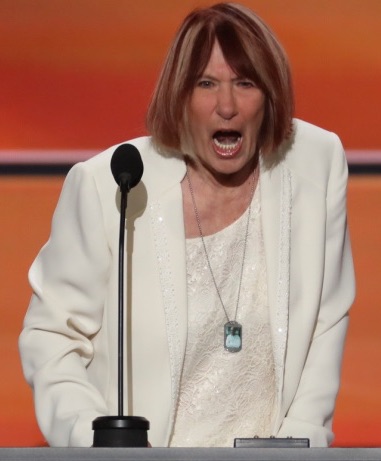
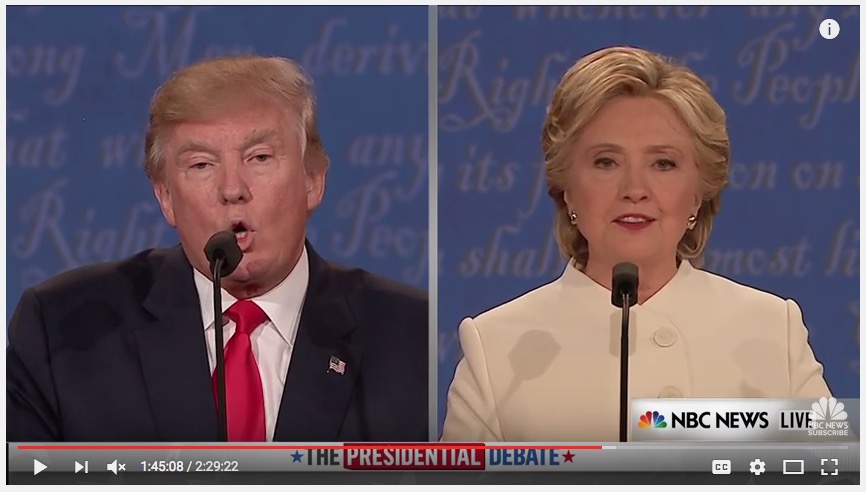
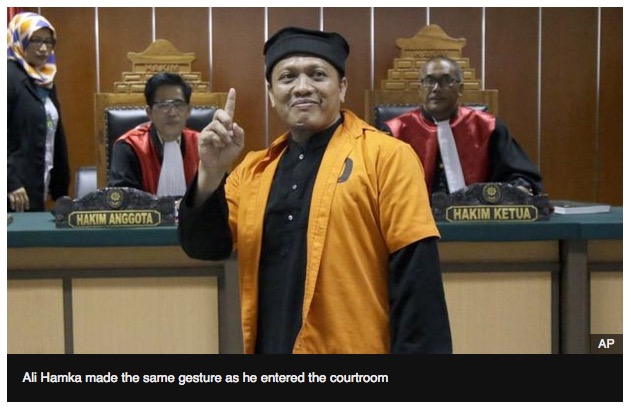
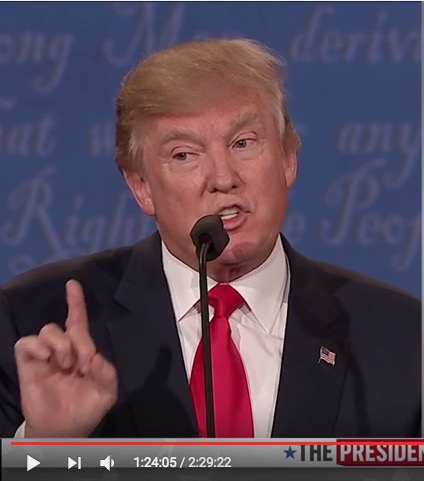

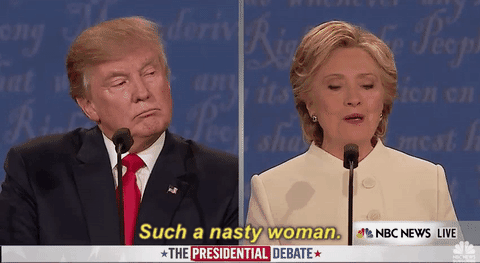

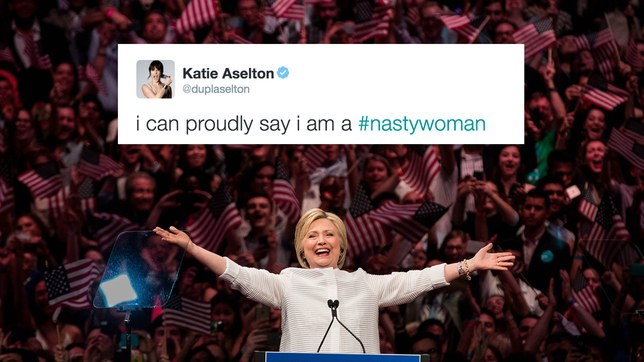
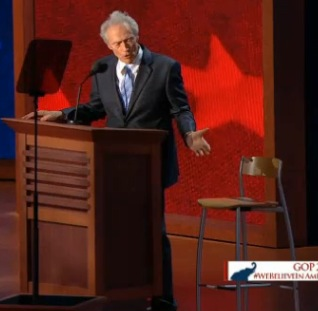
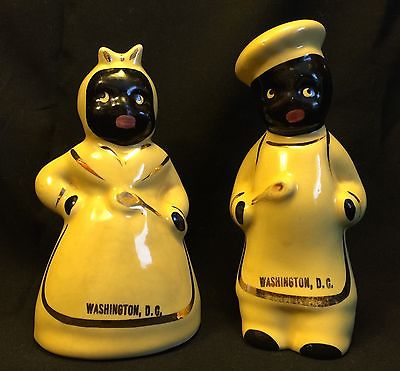
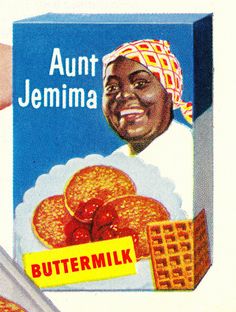




Debates would be much better served to put a timer on each microphone. After the allotted time the mike turns off. A good push towards rational time management for each candidate.
That could work, but only on the occasions when the candidates are given time limits (as with the opening questions of each of the six segments of the third debate). They’d still be unfettered during the larger part of the debate.
Perhaps we should make a course in good manners mandatory for participation. Or we could put them into those dog-obedience collars that deliver a mild shock for disapproved behavior — excess barking, wandering into the neighbors’ yard, and such.